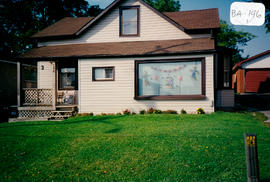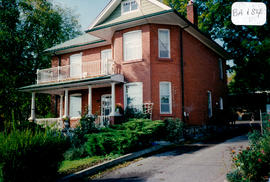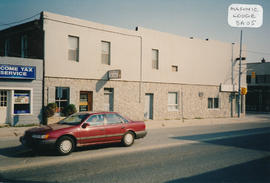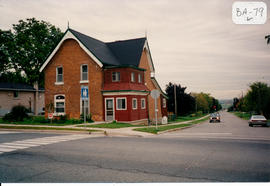- CA BWGPL GJ-HB-2017-03-15-07
- Item
- 1995
Part of George Jackson fonds
The two-storey, wood frame house located on the west side at 196 Barrie St. was built more than one hundred years ago. The original farmhouse did not have the front addition (as seen in the photo) and it was clad with white stucco (not vinyl). This building was once the home of the Tupling family, including Ed (crate factory). At that time (1940’s), there was still a shed containing a cistern at the back. Years later it was the home of Bob Petrie (father of Ev).
The house was purchased by the Kulcsar family in 2001. During the various stages of the restoration, thick, stone foundation walls were discovered. These walls were reinforced with 1’-square timbers fastened together with wooden pegs and square-headed nails (likely produced by a local blacksmith). Segments of horsehair-plastered walls and cascading ceilings were also found. (1, Letter by S. Jacqueline Kulcsar)
George Jackson










